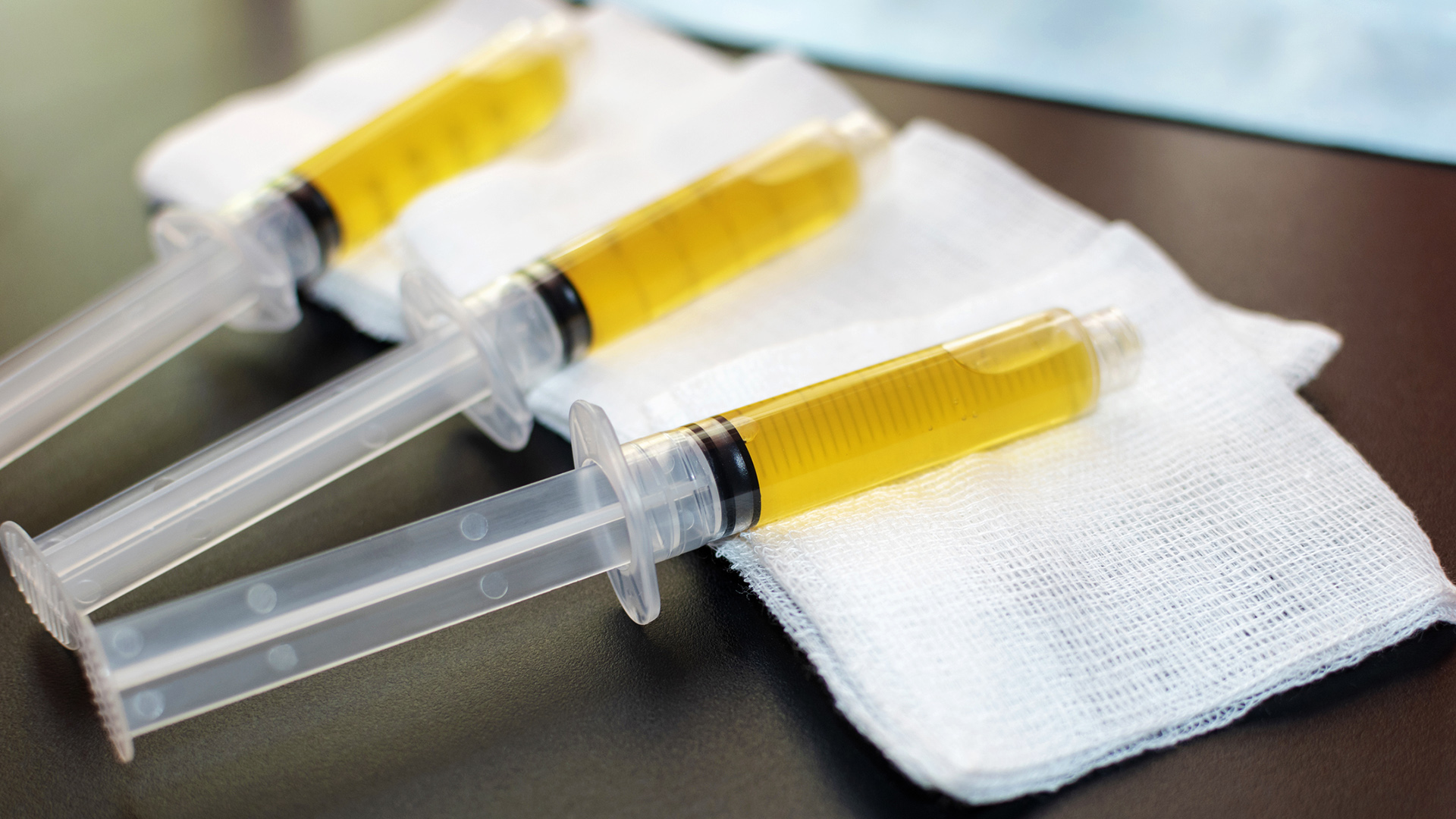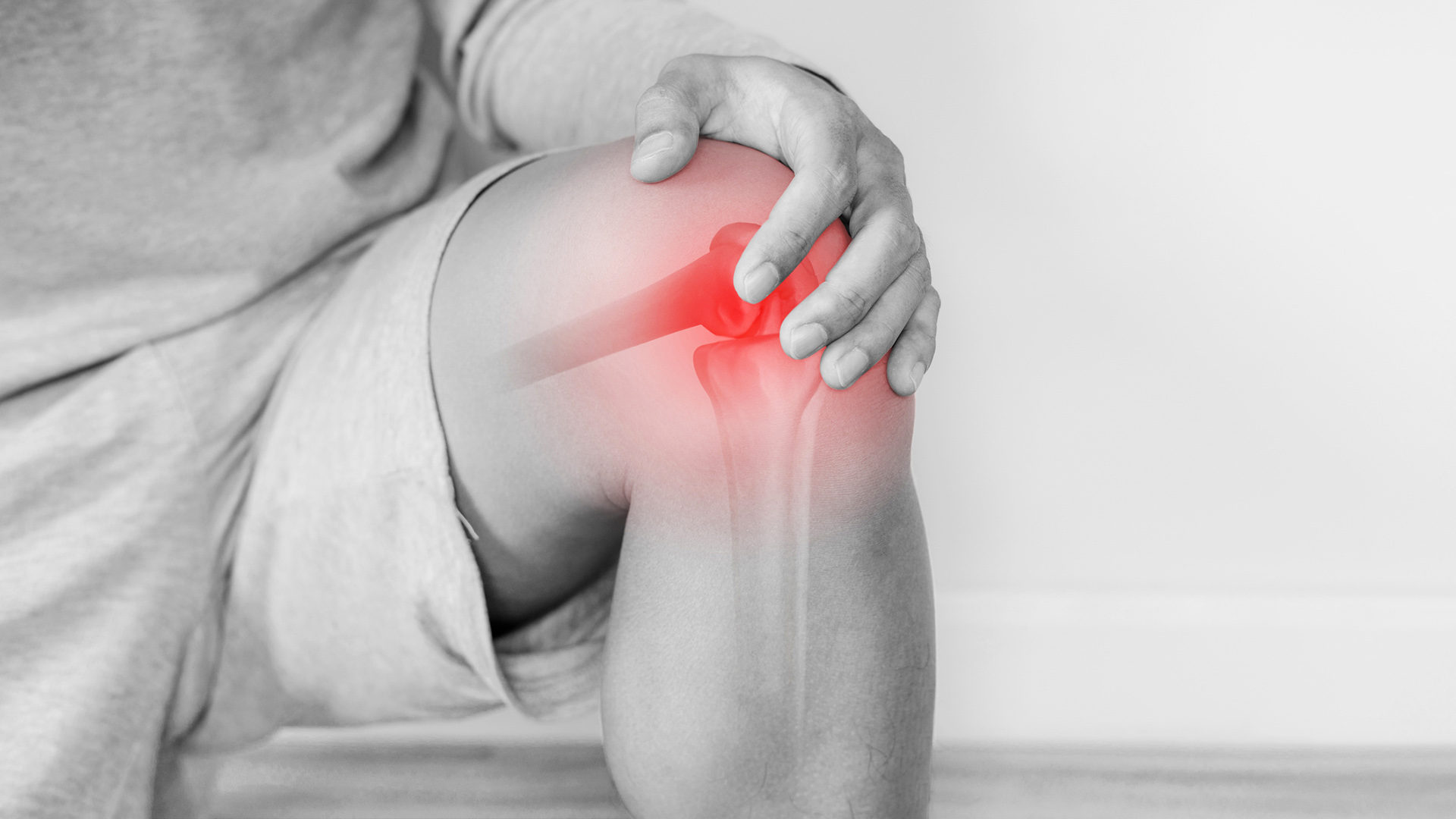
An info series on Dr. Ursus Lüthi and Dr. Peter Schnorr
Does adding hyaluronic acid make PRP more effective?

PRP is an endogenous healing concentrate of growth factors that belong to the human body
What’s PRP?
PRP stands for platelet-rich plasma. After blood is taken and the platelets have been harvested and concentrated, a concentrate of growth factors forms and activates endogenous healing in damaged tissue. The human body creates platelets to activate wound healing; these platelets are harvested directly from the patient’s blood in therapy. Randomised controlled studies have shown that PRP is more effective than hyaluronic acid [1].

Hyaluronic acid is part of the extracellular matrix
What’s hyaluronic acid (HA)?
Hyaluronic acid is part of what fills the space between the cells, which is referred to as the extracellular matrix or ECM. As an analogy, it’s rather like a traffic regulator between buildings (the cells) in the urban jungle. Hyaluronic acid plays a major role in ECM by regulating fluid storage, cell movement and pressure while keeping pathways between the cells unobstructed.
It used to be thought of as an artificial lubricant in synovial joints, but we’re now more aware of its beneficial effects on the chemical composition of damaged synovial fluid.
We now have well tolerated synthetic drugs that have been tested for years in theory and in clinical practice for effective pain relief.

Would it be possible to boost the effectiveness of treatment by combining PRP and hyaluronic acid?
Orthobiological treatment methods
Our own experience on our patients has shown more positive outcomes using PRP compared to hyaluronic acid. Complex orthobiological treatment methods have been developed for arthritis leading to a further increase in the positive effects of treatment. This involves using PRP to treat the accompanying pain around the joint through to the possible causes of arthritis, including those involving bone tissue near the joint.
However, this raised the question as to whether we could increase the effectiveness of treatment even further by combining the positive effects of PRP with those of hyaluronic acid. Or would this combination do more harm than good?

Combining PRP and hyaluronic acid reduces pain
Less anti-inflammatory medication
A study published this year looked into the effectiveness and lasting benefit of treatment on arthritis in the knee by using hyaluronic acid alone, PRP alone, or both in combination.
It emerged that the group that had taken both PRP and HA experienced less pain and improved knee function after two years compared to the two groups that had taken PRP or HA alone. The combination group also took less anti-inflammatory medication [2].

A meta-analysis published in 2020 compared PRP in combination with HA versus PRP alone in osteoarthritis to the knee
PRP plus HA significantly reduces pain
The importance of a scientific idea increases with rising numbers of studies and patient cohorts as well as reviews of studies for their relevance and summarisation in meta-analyses. A meta-analysis also published in 2020 has summarised the results from several studies.
A total of seven studies on 941 patients compared knee arthritis treatments using PRP together with hyaluronic acid versus PRP alone. PRP combined with HA showed improvement in pain reduction compared to the sole use of PRP; these results were significant, meaning statistically real across the study population. The observation period in this meta-analysis was limited to only six months after treatment [3].
But the results still show an initial trend. We’ve especially seen more rapid pain relief as a benefit of combined application, while PRP seems to show a long-term effect making treatment outcomes last longer in most cases. We will continue to observe these developments and optimise our treatment strategy accordingly.







